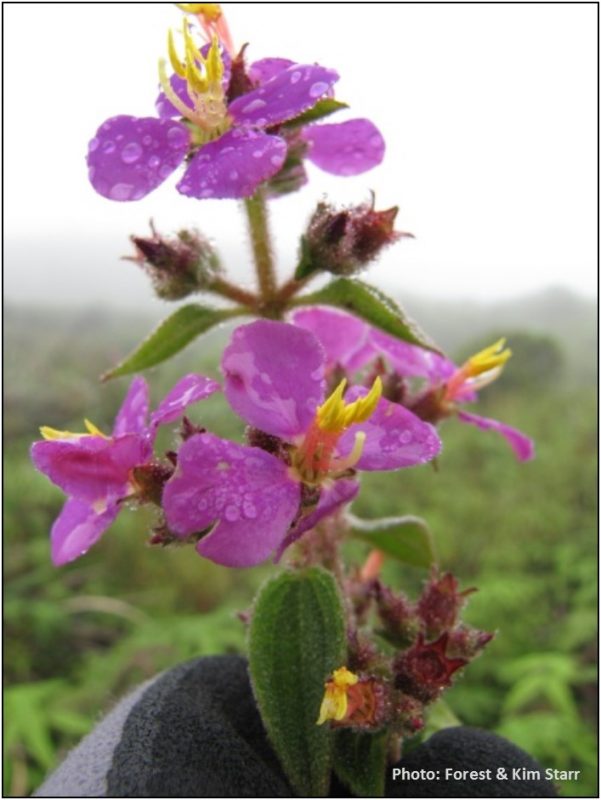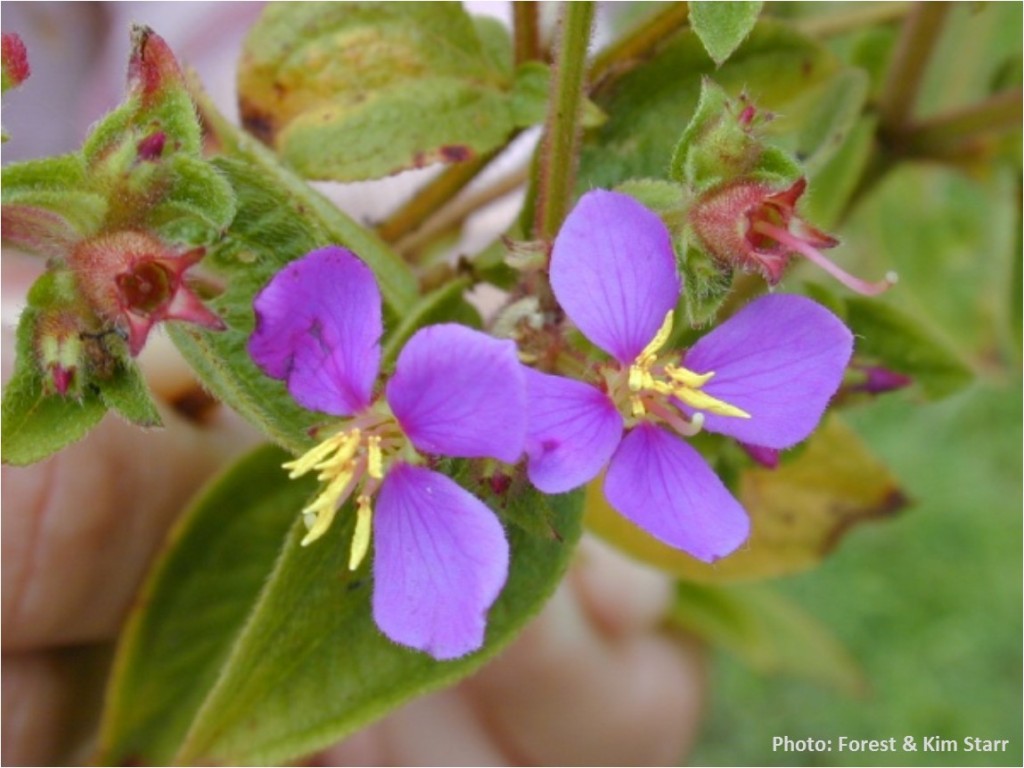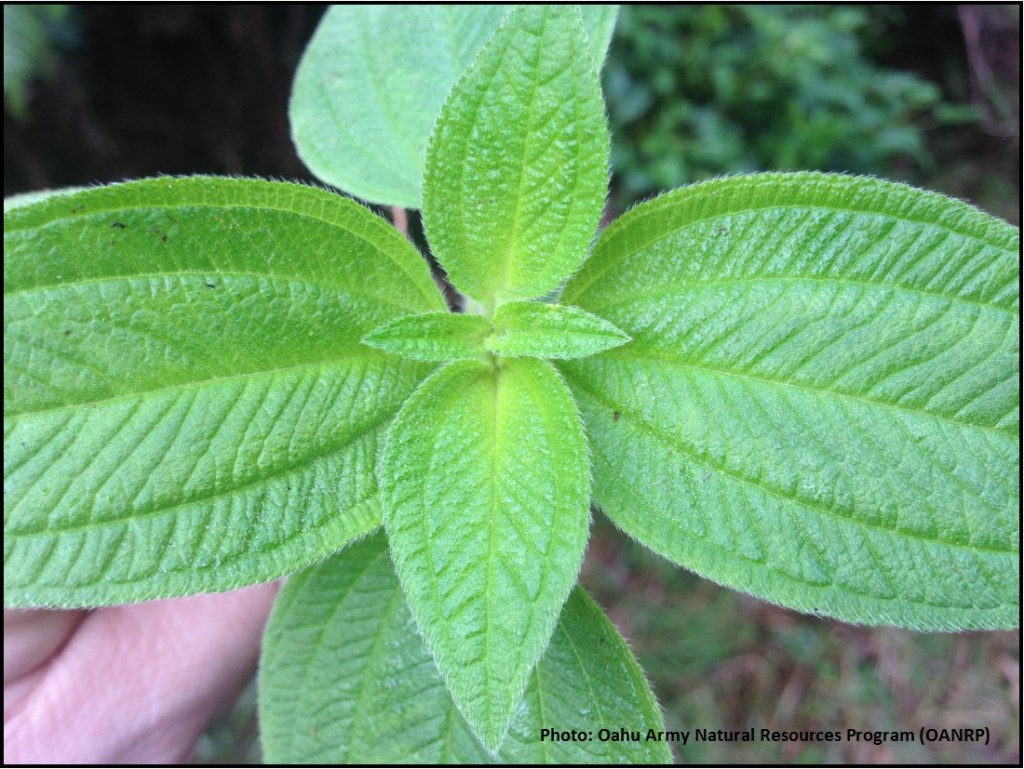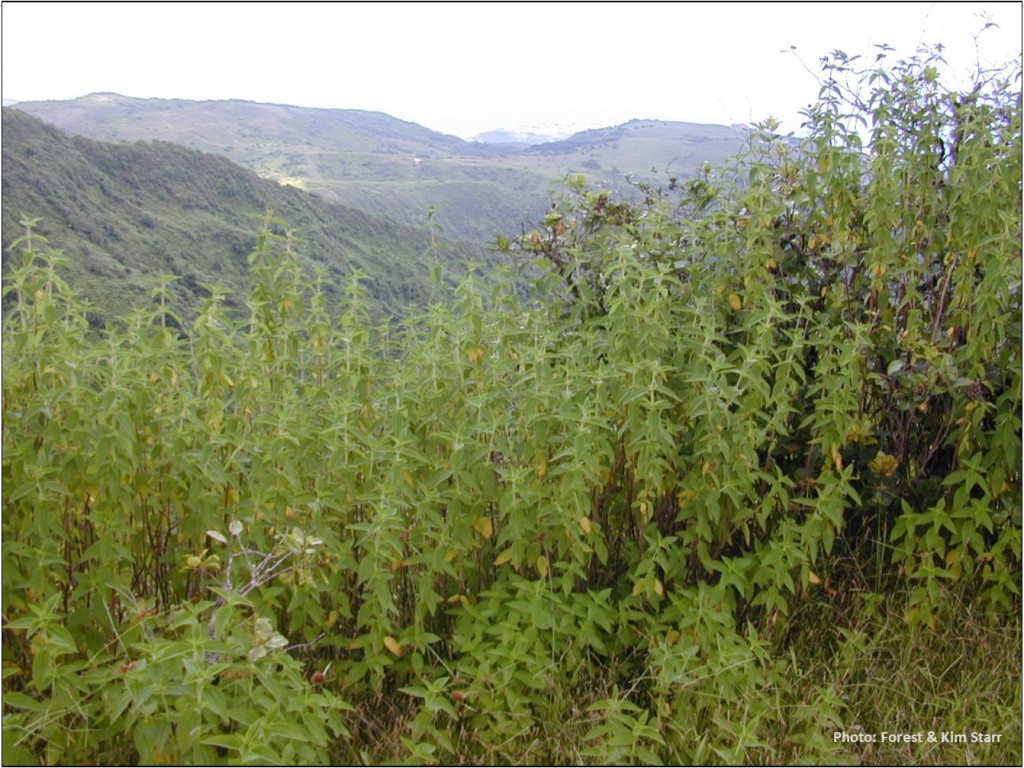Do NOT pull or cut down the plant. OISC will properly remove and dispose of the plant to prevent spreading seeds and re-sprouting. Please report cane ti to OISC. Send photo and location to oisc@hawaii.edu or text 808-286-4616. You can also call our office at 266-7994.
Cane tibouchina (Tibouchina herbacea))
Family: Melastomataceae
All species of the genus tibouchina are listed on the State of Hawaii Noxious Weed List, including OSIC targets T. herbacea and T. urvilleana. Cane tibouchina poses a major threat to the Ko‘olau forests, especially the near-pristine summit regions. Not only does the plant thrive in wet forest conditions, it also produces hundreds of tiny seeds and can spread vegetatively. Broken pieces—even small ones—can root and form new plants. The seeds are easily transported via wind, birds, and pigs; hikers unwittingly carry them on shoes, clothes, and backpacks.
A pest plant abstract for Tibouchina prepared by The Nature Conservancy notes that it has taken Tibouchina less than a decade to spread across nearly all appropriate habitats in the west Maui mountains, an impressive and frightening feat. Cane tibouchina is a member of the Melastoma family, as are both Miconia and Clidemia, two superweeds. Many melastomes are highly aggressive in Hawai‘i.
Cane tibouchina is native to South America and was first recorded on Hawai‘i Island in 1977 and on Maui in 1982. Both islands are now heavily infested with cane tibouchina. It was then discovered on Lānaʻi in 1992 and on Moloka‘i in 2003. The only known population on O‘ahu was discovered in 2008 at Poamoho, and is not regarded as established on the island. There are no known populations on Kaua‘i. The introduction of cane tibouchina to Hawai‘i is associated with the ornamental plant trade, though it is unknown whether introduction was intentional or accidental. However, the inter-island spread since its initial introduction to the state is mostly accidental via contaminated materials.
Description:
- One shrub can have many upright stems, also called canes…from which the common name, cane tibouchina, is derived.
- Upright shrub, reaching 3- 4 meters (9-13 ft) tall.
- Leaves are very hairy, oval to oblong shape.
- Leaves are between 3cm – 7.5cm (1.2″ – 3″) long and 1.3cm – 3.5cm (.5″ – 1.5″) wide.
- Flowers have four petals and can be purple to purplish-pink, with long yellow stamens that rise out of the center.
- Flowers are small, .5cm (.2″) long by .5cm (.2″) wide.
- In Hawai‘i, cane tibouchina flowers from late August to January.
- Stems are angled, somewhat woody, and covered with many tiny hairs.
Harm:
- Prime habitat are wet, mesic forests that are slightly open or disturbed (especially by pigs and landslides), though it can germinate in shaded areas.
- Grows rapidly, forming thick stands that crowd or shade out the native plants competing for habitat.
- Reproduces by both seed and plant fragments.
- Each plant can produce anywhere between 300-3,000 seeds.
- Seeds are spread by birds, rats, pigs, water, and human foot and vehicular traffic.
- Has been identified as a threat to at least 12 threatened or endangered species, including endemic lobelioids.
On O’ahu:
- First detected in 2005 at Poamoho in the Ko‘olau Mountains…only known population on the island.
- OISC is working with Ko‘olau Mountains Watershed Partnership (KMWP) and the Department of Land & Natural Resources Nature Area Reserves (NARS) to conduct management operations to eradicate this population.
- For more information or to report cane tibouchina, call OISC at 286-4616 or email oisc@hawaii.edu.









